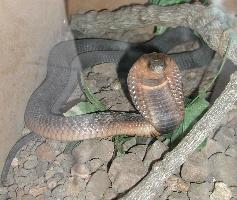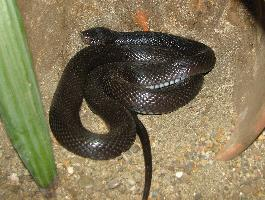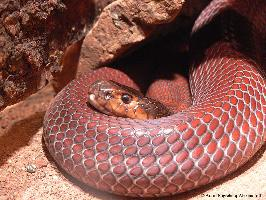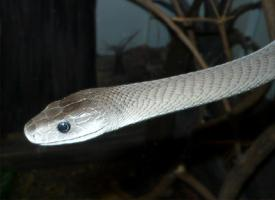
Váhy a míry
| Délka | od 2,5 do 4,5 m |
|---|---|
| Rychlost | 20 km/h |
Stav ohrožení
| Neohrožen |
Popis zvířete
The Black Mamba (Dendroaspis polylepis) is a highly venomous snake, renowned for its speed, agility, and potency of venom, making it one of the most feared creatures in its natural habitat. This formidable reptile is native to parts of Sub-Saharan Africa, thriving in a variety of environments including savannas, rocky hills, and forests. It is not only the speed at which it can move, reaching up to 12 miles per hour, but also its aggressive defense mechanisms and the rapidity with which it can strike, that have contributed to the black mamba’s fearsome reputation.Characteristically, the black mamba is not actually black. Its name derives from the inky black coloration found inside its mouth, which it displays as a warning signal to potential threats. The skin color of this snake varies from olive to greyish tones, with a lighter underbelly. Adult black mambas typically measure between 2 to 3 meters in length, although some individuals have been recorded at lengths of up to 4.5 meters, making it the longest venomous snake in Africa.
The black mamba's diet primarily consists of small mammals and birds. It employs a highly efficient hunting technique, relying on its speed and stealth to catch prey unawares. Once it has bitten and injected its potent neurotoxic venom, it waits for the venom to immobilize the prey before consumption. This venom is among the most lethal in the world, capable of causing death in humans within hours if left untreated. The symptoms of a black mamba bite can include difficulty breathing, paralysis, and eventual respiratory failure, highlighting the critical importance of immediate medical treatment.
Reproduction for the black mamba involves a combat dance between males vying for the attention of a female. After mating, the female lays a clutch of eggs, usually in a secluded, underground burrow. The eggs incubate for about 90 days before hatching, with the young snakes being entirely independent from birth.
Despite its reputation, the black mamba is generally a shy species, preferring to avoid confrontation with humans whenever possible. Most attacks occur when the snake is accidentally cornered or provoked. Nevertheless, its presence commands respect and caution, embodying the delicate balance between fear and fascination that characterizes humans’ relationship with the natural world.
Conservation status of the black mamba is currently of less concern, but like many species, it faces threats from habitat destruction and human encroachment. Efforts to understand and preserve this species are crucial, not only for the black mamba itself but also for the ecosystems it inhabits, where it plays a significant role as both predator and prey.
Mapa výskytu
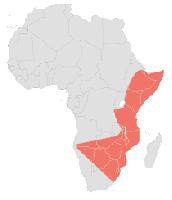
Podobná zvířata
Nové fotografie zvířat
Top 10 zvířat
- Chinese water dragon (Physignathus cocincinus)
- Galápagos tortoise (Geochelone nigra complex)
- Dolphin gull (Leucophaeus scoresbii)
- Japanese macaque (Macaca fuscata)
- Colombian red howler (Alouatta seniculus)
- Sea urchins (Echinoidea)
- Moustached guenon (Cercopithecus cephus)
- Diana monkey (Cercopithecus diana)
- Common reed warbler (Acrocephalus scirpaceus)
- Common house mosquito (Culex pipiens)
